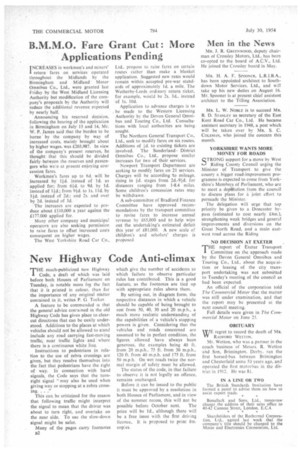New Highway Code Anti-climax
Page 36

If you've noticed an error in this article please click here to report it so we can fix it.
THE much-publicized new Highway
Code, a draft of which was laid before both Houses of Parliament on Tuesday, is notable more for the fact that it is printed in colour, than for the importance .of any original matter contained in it, writes P. G. Tucker.
A feature to be commended is that the general advice contained in the old Highway Code has given place to clearcut directions that can be easily understood. Additions to the places at which vehicles should not be allowed to stand include any road carrying fast-moving traffic, near traffic lights and where there is a continuous white line.
Instructions to pedestrians in relation to the use of zebra crossings are given, but they resolve themselves into the fact that pedestrians have the right of way. In connection with hand signals, the Code says that the turnright signal "may also be used when giving way or stopping at a zebra crossing. . . ."
This cars. be criticized for the reason that following traffic might interpret the signal to mean that the driver was about to turn right, and overtake on the near side. To use the slow-down signal might be safer.
Many of the pages carry footnotes B2 which give the number of accidents to which failure to observe particular rules has contributed. This is a good feature, as the footnotes are tied up with appropriate rules above them.
By setting out, in diagram form. the respective distances in which a vehicle should be capable of being brought to rest from 50. 40, 30 and 20 m.p.h., a much more realistic understanding of the capabilities of a vehicle's stopping powers is given. Considering that the vehicles and roads concerned are assumed to be in perfect condition, the figures allowed have always been generous, the examples being 40 ft. from 20 m.p.h.. 75 ft. from 30 m.p.h., 120 ft. from 40 m.p.h. and 175 ft. from 50 m.p.h. On wet roads twice the normal margin of safety must be allowed.
The status of the code, in that failure to observe it is not legally an offence, remains unchanged.
Before it can be issued to the public it must be approved by a resolution in both Houses of Parliament, and in view of the summer recess, this will not be possible before October next. The price will be Id., although there will be a free issue with the first driving licence.. It is proposed to print 8m. copies.




















































































